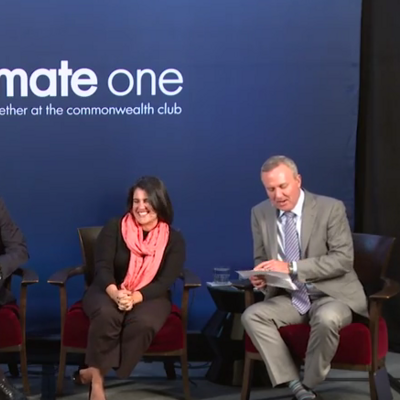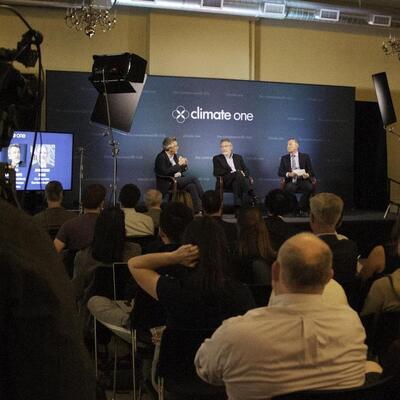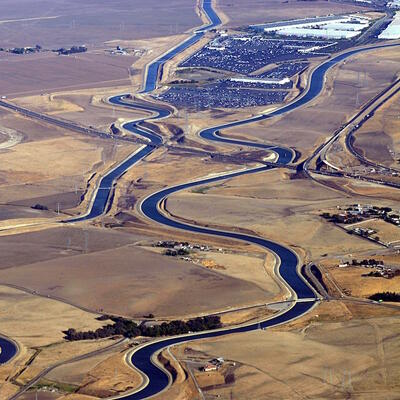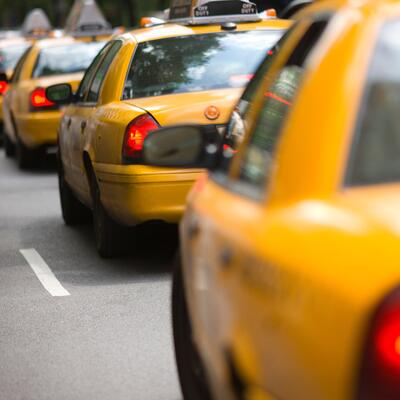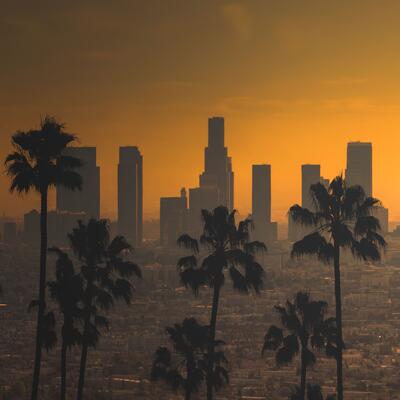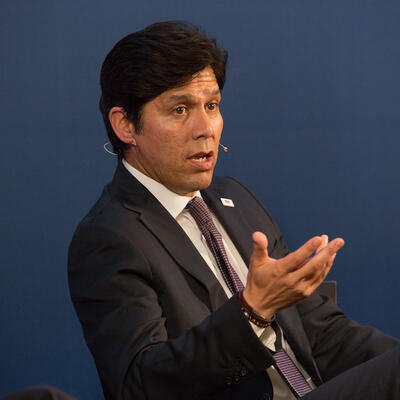
C1 Revue: Does Greening The Economy Leave Some People Behind?
Guests
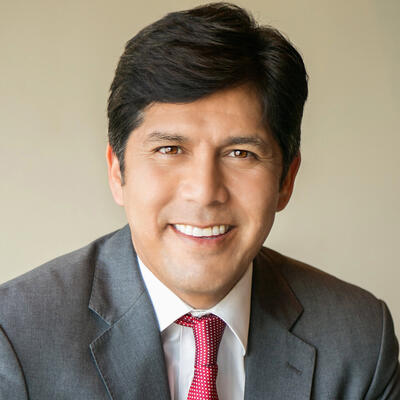
Kevin de León

Melanie Mason
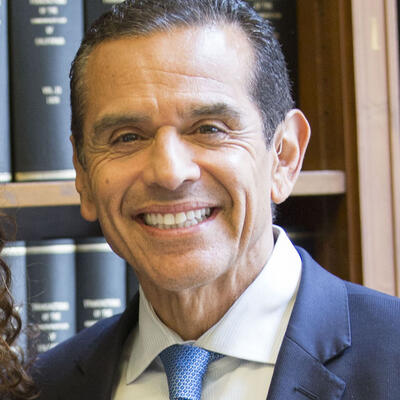
Antonio Villaraigosa
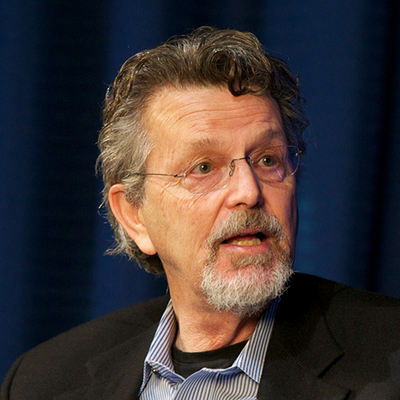
Peter Calthorpe
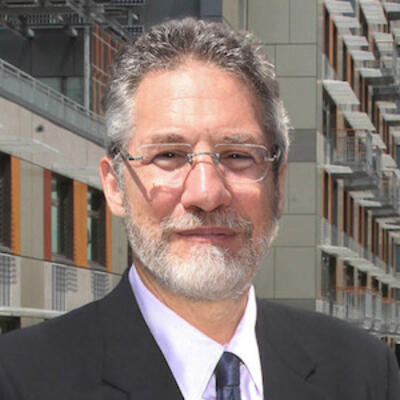
Jonathan F.P. Rose
Summary
Cities are leading the way in the greening of America’s economy. From urban parks and farms to microgrids and living buildings, dynamic urban planning can adapt to changing coastlines and severe weather delivered by a volatile climate. But there’s a risk that green-living innovations become solely the domain of a privileged urban elite. On today’s show we hear how issues from transit to housing to jobs are all affected by our changing climate, and how states like California are working to ensure that everyone benefits from a greener economy.
Kevin de León, President pro Tempore, California State Senate
Melanie Mason, Reporter, Los Angeles Times
Antonio Villaraigosa, Former Mayor of Los Angeles
Peter Calthorpe, Principal Architect, Peter Calthorpe Associates
Jonathan F.P. Rose, Co-Founder, Garrison Institute
Full Transcript
Announcer: This is Climate One, changing the conversation about energy, economy and the environment.
As America’s economy gets greener, people have more choices than their parents did.
Kevin de León: If you wanted to raise a family, buy a house, send your kid off to college, the narrative was that you’d have to grow the economy by burning fossil fuels. But we know that narrative is old now we've debunked that.
Announcer: America’s cities are leading that charge.
Peter Calthorpe: Density is not enough. These cities have to be walkable. They have to be well-connected. They have to be places where people can live lightly.
Announcer: But there’s a vigorous debate over who gets to enjoy the gains of a cleaner economy.
Antonio Villaraigoa: If you don't connect this to jobs and to environmental justice, you're missing the real point of why we have to address climate change.
Announcer: Does greening our economy leave some people behind? Up next on Climate One.
Announcer: How do we ensure that the greening of our economy benefits everyone? Welcome to Climate One – changing the conversation about America’s energy, economy and environment. I’m Devon Strolovitch. Climate One conversations – with oil companies and environmentalists, Republicans and Democrats – are recorded before a live audience and hosted by Greg Dalton.
More people are living in cities than ever before. In China, 350 million people are moving into dense urban areas in one of the biggest demographic shifts in human history. How those communities are formed and powered will have a significant impact not only on the future of China but on the air quality and climate in the United States. So what are the bold ideas that are shaping the future of cities? In this part of the program we discuss urban parks and farms, microgrids and living buildings – dynamic urban planning that adapts to changing coastlines and severe weather delivered by a volatile climate.
Joining Greg are two visionary authors who write and think deeply about urban communities in the US, China and beyond. Peter Calthorpe is an architect and urban planner who’s championed walkable communities in transit oriented development. He works in California and China on shaping land use and property development in ways that increase the quality of life and decrease carbon pollution. His latest book is “Urbanism in the Age of Climate Change.” Jonathan Rose has a real estate development planning and investment firm. He previously co-chaired the commission created to reduce the carbon footprint of New York City's huge transit system. Jonathan cofounded the Garrison Institute and created his climate mind and behavior program. His new book is “The Well-Tempered City: What Modern Science, Ancient Civilizations, and Human Nature Teach Us About the Future of Urban Life.”
Here’s our conversation about cities of the future.
Greg Dalton: Jonathan Rose, you write that the key to the future of cities is found in the past. So tell us about some of the, how you opened your book, you touched on Jericho and other ancient civilizations and how they can inform where we are today.
Jonathan F.P. Rose: So I’m gonna talk about a lesson from the deep past really before civilization began. It's a climate story and it’s one of the reasons why civilization began. About 10,000 BC there is a climate incident in which all of a sudden the climate became much colder. And what happened was the grains they were then available adapted, those that couldn't adapt of course died or diminished they had a much shorter growing season. And so what they had to do was grow a much bigger seed head and had to actually grow a harder coating around it to protect the seed head from the winter in effect and that bigger seed head had many more calories and nutrients in it. So you ask why did agriculture take place when it took place. There are many reasons. Part had to d o with technology and, it actually had to do with cognition how we actually understood things. But it turns out until that moment, there really weren’t grains worth agriculting for with, you know, growing. After that there were these incredibly powerful caloric and nutritious grains. They were created by climate change. That period was about 300 years and when that period was over, all of the sudden the beginnings of civilization really expanded.
Greg Dalton: So climate change happened in a way that human civilization adapted positively. And we'll talk later about some more challenging adaptations to climate.
Jonathan F.P. Rose: But, so what we see is the climate change always transforms the natural ecology and leaves things differently afterwards. And so what we really need to do is to increase the adaptive capacity of our current civilization to adapt to the climate change. That was naturally occurring climate change. This is climate change that we have created.
Greg Dalton: You also write a little bit about how naturally civilization developed near waterways, coastlines that sort of things. Peter Calthorpe, now most Americans live along the coast. A lot of the larger cities are on the coast or a major waterway. You’re a champion of developing those cities in a more livable human way. How do you see where we are right now in terms of this stage of increasing urbanism, and increased density along the coast?
Peter Calthorpe: Well cities in general are really the vessel of the future of mankind. I mean this country transition from agrarian population, 98% to where we are now. China is going through exactly the same transition. And we all know the earth is urbanizing. The question is what kind of cities and what kind of lifestyles and what kind of urban footprint. What kind of environmental weight will we put down there. Lot of people like to think of cities like typical, now I would say Manhattan has the lowest carbon footprint per capita, absolutely correct, but density is not enough. These cities have to be walkable. They have to be well-connected as Jonathan points out. They have to be places where people can live lightly. So the difference, let's just look at it here in the United States. In the 60s when we generated our vast middle class and incredible wealth. The average household was about 1,100 square feet. Now it's 2,300 square feet. Just the quantity of space to heat and cool is by many factors per capita greater. We had the luxury of one car per household back then and now it's 2.3. We were averaging under 10,000 vehicle miles per capita and now it's, you know, for suburban places 26,000 miles. So before we get to all the conservation and renewable energy sources, we have to look deeply at our lifestyles. And our lifestyles are driven in a really creative interactive way by the kinds of environments we live in. The kinds of cities we create. I mean Churchill once said he was referring to buildings of course. But we shape the built environment and then it shapes us. And that's really the challenge the city making and it's foundational to the climate question I think.
Greg Dalton: Jonathan Rose, the density is good for climate, and people have lower carbon footprint. Yet today in San Francisco, in many cities, those are increasingly not affordable so they are low carbon, but they are high wealth, high income areas. So help us address this equity or inclusion challenge that we’re feeling very painfully in the Bay Area.
Jonathan F.P. Rose: So the answer is you don't have enough density. There is a huge affordable housing issue in San Francisco. Actually, affordability is defined as being able to spend up to 30% of your income on housing and not more. In America today, there are 20 million American families that spend more than 50% of their income on housing. And these are hard-working families. It's hard to think when you add the cost of transportation and then where I don’t even see how family can pay for healthcare and food and all the other things they need to spend 50% of your income on housing. So if the goal is 30% of our income on housing, to meet that in San Francisco the median rental or home cost requires an income of $160,000 a year. So there’s a huge affordability gap here. The only way we’re gonna solve this is we have to preserve existing affordable housing, but we need to build more. We need to build dramatically more. The great thing is this area is a job generator, so growth is here and wants to continue to be here. We have to build our way out of it and building our way out of it means much more density, and mixed-income density, and much more open space and creating much more livable communities. And these two things can go hand-in-hand. They are not currently politically acceptable, and as long as they remain unacceptable, higher density in San Francisco then we’re gonna continue to have an affordable housing problem.
Greg Dalton: Peter Calthorpe, lots of areas are going through this. Lot of people would support what Jonathan Rose just said. Just in someone else's backyard Why can’t it happen?
Peter Calthorpe: Well, I do wanna just differ a little bit from Jonathan. I think that what we need is urbanism, not density. We need different forms of urbanism and we need to look at this as a regional issue. The basic quality of being walkable and mixed-use and relatively compact. We had a beautiful system in the United States prior to the post-World War II sprawl, which was streetcar suburbs. We had fabulous downtowns, we had these beautiful communities that you could get to by trolley. And then you would walk down Main Street over to Elm Street and you'd be home. And there was this connectivity that didn't really lean on the car too much. So there's a vision there in that. And so the challenge is for all the communities in the Bay Area to pick up and satisfy the needs. And there are wealthy communities that basically are saying no. They never say no to a new commercial development or a new office building or new employer. But they sure say no to high density housing and infill housing. So there’s a whole issue around jobs housing balance in the Bay Area. Silicon Valley is where all the jobs are and all the people that don't have wealthy salaries end up in the East Bay and beyond. Long commutes, a hugely painful economically and in terms of life for people to have to make those long commutes, whether they're firemen or teachers or what have you. And, you know, our highways and our air suffer as a result. And it's very exclusionary and it's very unhealthy.
Greg Dalton: Jonathan Rose, you write about suburban poverty. And also how the sub mortgage sort of machine contributed to that. So tell us how that came together.
Jonathan F.P. Rose: Well, there is now more suburban poverty in America than there is urban poverty. People, and so people who live in the suburbs who are meet the definition of poverty actually are more burdened by their cost of transportation but they are also more burdened by fewer resources. So if you are poor and striving and in a city, there are after school programs. There’s a lot more resources for you than there in the suburbs. So it's not a good situation for America. And as Peter has pointed out, the suburbs tend to be places that are less likely to want to deal with it. And we have to rethink what the suburbs mean too, because we have a series of aging suburbs with aging infrastructure and many of them are the places that are not attracting the jobs that the more prosperous suburbs are. So they don't have the resources to deal with the growing poverty in their areas also.
Greg Dalton: Bring back this to climate change it sounds like this is another example where green living is yet sort of for the privileged, that you can afford to live the low carbon lifestyle in an urban area. And if you're driving a car living in the suburbs, maybe you have good food choices. It's another way that the green economy is kind of skewed toward the fortunate.
Jonathan F.P. Rose: We have to to equalize the landscape of opprtunity. We now know that America is deeply divided by ZIP code. There are places in the United States in which the healthiest people will live 15 or 20 years longer than in the worst ZIP Codes. We know that there are ZIP Codes where income is usually divided. We know there’s very interesting data that shows literally opportunity of children there are places in America where if you're born your children are likely to have a lower income than you. And there are places if you’re born statistically your children likely to have a higher income than you. That has to do with education system, a variety of other things. So we are a deeply fragmented divided nation. I believe that America was conceived of as a land of opportunity. That's our mission statement that’s, if you boil us down that’s what we have to offer the world. And that means we have to equalize the landscape of opportunity for all. To do that means we need to spread affordable housing throughout all communities. And we need to spread transit equally throughout all committees. We need to spread parks and open space. Education, the quality of education needs to be equalize throughout all over communities. So that you, we should imagine an America where we, where not only every child has a chance to do better. But every child as you’ve started this question with has a chance to live in a greener, healthier way.
Announcer: Welcome back. Greg Dalton is talking about the future of cities with architect and urban planner Peter Calthorpe, author of “Urbanism in the Age of Climate Change.” And real estate development planner Jonathan Rose, author of “The Well-Tempered City: What Modern Science, Ancient Civilizations, and Human Nature Teach Us About the Future of Urban Life.”
Here’s Greg.
Greg Dalton: We’re gonna go to our lightning round and ask you a series of short answer yes or no or one-word questions. First for Jonathan Rose, true or false, the 1950s produced no architecture of lasting value?
Jonathan F.P. Rose: Generally true, but not totally true.
Greg Dalton: Peter Calthorpe, Los Angeles will be a walkable and transit friendly city within 20 years?
Peter Calthorpe: Yes, absolutely.
Greg Dalton: Jonathan Rose, European towns in general are more livable and functional than American towns?
Jonathan F.P. Rose: Yes.
Greg Dalton: Peter Calthorpe, most Americans don't want to live like Europeans with their small homes and cars?
Peter Calthorpe: False.
Greg Dalton: Jonathan Rose, which city has the most advanced smart grid?
Jonathan F.P. Rose: I don't remember.
Greg Dalton: Austin.
Jonathan F.P. Rose: Thank you. It’s glad somebody read my book.
Greg Dalton: Most green stormwater system?
Jonathan F.P. Rose: Philadelphia.
Greg Dalton: And this is easy, best congestion traffic pricing, they are famous for this.
Jonathan F.P. Rose: It’s London.
Greg Dalton: Peter Calthorpe, the living architect you respect most?
Peter Calthorpe: Oh my gosh.
[Laughter]
The living architect. That makes it really difficult. Can we come back to that later?
Jonathan F.P. Rose: You like some of those guys in the 50s.
Peter Calthorpe: I have a hard time with architects. I think, but there’s a new generation of architects that are finally getting it right. And the whole LEED movement and the focus on green has not only solved energy problems but has made more beautiful buildings. I mean the buildings are much more textured and interesting and memorable than they were. And they're much better to live in. I mean it’s a complete revolution. When I went to architecture school, it was Philip Johnson and all these evil people doing, you know, just cartoon turning buildings into cartoons. And they came on the coattails of the brutalists who were happy about that name – brutalism. So I mean it's hard, we’re heading in the right direction I can’t point at the one I love the most. Renzo Piano I will say, you know, who did the work in San Francisco here. I love dearly because he really does care deeply about climate and he has a certain elegance to his work.
Greg Dalton: Jonathan Rose, the living architect you most respect?
Jonathan F.P. Rose: I respect many of them but I’m gonna point out two. So, one is Nick Grimshaw who is from England he’s very, very, very green, very community focused has done amazing transit centers around the world very technical in his work. And Jeanne Gang from Chicago who’s doing also really interesting urbanism.
Greg Dalton: Peter Calthorpe, the living architect you least respect?
[Laughter]
Peter Calthorpe: That’s easy. Rem Koolhaas.
Greg Dalton: Jonathan Rose, living architect you least respect?
Jonathan F.P. Rose: The living architect that I least respect is actually not one architect. But if you actually think about it most of America is not designed by people like Rem Koolhaas or Nick Grimshaw or any of these people. The mediocrity, so remember the question about the, I know it’s the lightning round but the question about the European villages. The general just general background building is just the ordinary building is so graceful and fitting with the environment and natural made out of local materials and all that. And the general quality of just commercial development of the United States is not.
Greg Dalton: That’s the end of our lightning round. How they do? Let’s give them a hand for getting through that, the gantlet of the lightning round.
[Applause]
Greg Dalton: Peter Calthorpe, you spent a lot of last six years in China. How China urbanizes is one of the most significant things for stabilizing the climate. Beijing was built on this sort of Stalinist grand boulevard model it’s in Beijing, it’s not a walkable city. Lots of the other cities are still kind of built around the car. Tell us what's going on in China and how they’re gonna build the future of the city.
Peter Calthorpe: Well they inherited the Soviet model, which was also the modernist architect’s vision of the 30s, which was towers in the park, super blocks and huge romance with the car. And they’ve been building it at a pace that’s beyond frightening and of course the results are deadly, literally deadly. So cities that once were dominated by pedestrians and bikes are now really, you know, tragically moved away from that. And it’s mostly because it's just too dangerous to be out there. Getting to a corner is often a quarter mile walk, getting across the street makes, I think you'd have to take four market streets and stack them side-by-side to get a typical major arterial. That's what happens when you build super blocks, you reduce the frequency of streets and so every street gets huge, and of course frustrates walking. So they’re in a downward spiral they’re building, the slums of the future tragically. If our urban renewal and affordable housing fail dramatically I shudder to think what's gonna happen to some areas in China. However, they are fact-based kind of engineer mentality culture. And our group with the energy foundation and lots of other people have been proving over and over again that they can afford to keep going in this direction. And as recently as this December from the highest level from the central committee basically for the first time in 37 years issued a new set of urban design standards which said, among other things, we will build small blocks. We will limit the amount of automobile use in cities, we will have targets for both split the transit. Every city will have to comply with. We will have open space and civic centers within walking distance of every new house, I mean a laundry list of best practices I'm happy to say. And it's a little frightening because the course it’s completely top down. I mean this was not any kind of collaborative consensus people oriented political structure. But it is the right direction. And they are setting off in the right direction. They’re really serious about solving their air quality and congestion problems. They understand that their economy can't succeed as it shifts to a more white-collar service economy from an industrial economy. It can't succeed with unlivable cities. And it's not their goal I mean, the goal has been to move people from the countryside where poverty is highest into cities where economic opportunity does exist and where services, clinics, schools, running water, sewers, you know, parks all these things really can be delivered. So at the same time that they’re building the wrong kind of city, this is the biggest shift away from poverty, probably in the history of mankind. So I have to acknowledge that at the same time that we think it could be done better. I think it will be done better and they're very serious about climate change issues, I'm happy to say. And but they see it as related to all these other livability issues. And so very fortunately I think they're shifting into a profoundly better direction.
Jonathan F.P. Rose: So you know, what's interesting is for 3,500 years about 2,000 BC to about 1,500, China had an amazing system city planning. There was, they didn't vary actually during all that period of time. The buildings got more sophisticated with the whole organizational system and was entirely designed around the idea of balancing the forces of humans and nature. And the idea of harmony was deeply embedded within it. And China now talks about building cities or building their future with what they call Chinese characteristics. And I think the next step as they actually have to look back at the great history of what Chinese characteristics truly were in the past and try and figure out how to integrate those into their future.
Greg Dalton: Peter also mentioned water, Jonathan Rose I wanna ask you about water and food supplies with cities because that's something that we've become. These long supply chains where water’s tracked in on diesel powered trucks and in plastic bottles. And get to the future where there is maybe urban farms and food and water is closer to a well tempered city.
Jonathan F.P. Rose: Right. So 98% of the things that go into a city today in most cities in the world leave six months later as waste. And there's no way that we can have a population of 10 billion people on earth have prosperity increases people describing these people can consume more and have the climate change and this is, it’s totally unsustainable. You know we used to say unsustainable meant like that’s not so good. But unsustainable action means collapse, without moving from linear systems to circular systems. This is first done in Windhoek which is the capital Namibia, a country in southern Africa, desert city. And it was rapidly growing and the desert was increasing and they're running out of water. I brought in an engineer who designed the system to take their wastewater and to clean it perfectly and put it back and reuse it as drinking water. That system has run for 40 years without ever a failure. The engineer designed it said we need to judge water by its quality and not its history. So that's one example of linear systems. We now have water treatment systems that can remove the nitrogen and the phosphorus, which come from the urine in the systems for a $100 a ton. And sell them to fertilizer manufacturers for $400 a ton. We have water treatment systems that can capture all the methane, burn it, and not only fuel the plant itself, but provide enough energy for thousands of homes. So, what's happening is we’re beginning to rethink, for example, a water treatment plant which was considered a societal negative is now becoming a factory of resources for communities. Now imagine if you take every single aspect of what comes into a city that we have been treating as waste and think about how we can create the infrastructure and turn it into local jobs. They also design jobs to design these operating jobs and using the resources and create those into jobs. And as we create circular systems it makes the cities much more climate resilient because they're much less dependent upon the resources the world is gonna run out of. China by the way, in its central policy in 2012, this is called the circular economy dedicated and itself to a circular economy. We’ll see if they can actually get there. America is way behind in this idea.
Greg Dalton: Now briefly tell us about microgrids and living buildings. How those might be part of this.
Jonathan F.P. Rose: So once you begin to think about circles then you can so, living buildings is an idea that came out of Pacific Northwest. And these are buildings that are actually regenerative of nature, and that they, number one get their energy load and their consumption down very, very low by a lot of insulation really great design. And then they have a lot of solar that creates energy and they have a lot of, they capture all the rainwater. And if they can recycle that clean it and recycle it through their systems, they become almost independent. But what we need in cities is not independence but interdependence. So imagine if we begin to connect all those kinds of buildings together as a grid and then think of other energy sources. So we can be using cogeneration, we can be using venture of the batteries and large capacitors. If we’re using, you know, plug in hybrids whose batteries can be contained use as part of that. And tie these all into energy grids and actually there are two forms of energy. There is the electric energy that powers buildings and there’s also the heat energy when we burn, you know, furnaces and generators and things but also that heat energy can be circulated. There’s a microgrid that’s being built now in Minneapolis between the university and the hospital where they’re exchanging heat in a fantastic loop. As that happens and you do a multiway just the way Peter writes beautifully about how we need to get from arterials to street grids. When you create energy and heat grids all of a sudden you get some systems that we call self-healing. If one piece breaks their multiple parts, anyway the bottom line is with a lot of good design and smart data and continues dynamic adjusting these can use far lower amounts of initial energy. The energy they do use can be far more recycled throughout the system and you’ll begin to actually mimic nature.
Announcer: You’re listening to Climate One with Greg Dalton. Greg’s talking about the future of cities with architect and urban planner Peter Calthorpe, author of “Urbanism in the Age of Climate Change.” And Jonathan Rose author of “The Well-Tempered City: What Modern Science, Ancient Civilizations, and Human Nature Teach Us About the Future of Urban Life.”
Tell us about where you see yourself in the green economy – and let us know what you think about the program. Leave a comment or write a review on iTunes.
And follow us on Twitter. Our handle is @climateone.
In 2016, former California Governor Arnold Schwarzenegger (a Republican) and current Governor Jerry Brown (a Democrat) threw a party together to celebrate the 10th anniversary of the state’s main climate law, which Schwarzenegger signed and Brown recently extended with the help of a Republican vote. And several new laws come into effect this year that will impact the electricity that runs our toys and the food that comes to our kitchen tables. Green-living initiatives in California are often the start of trends that go national. But with issues from transit to housing to jobs all affected by our changing climate, how do we ensure that these trends don’t leave some people behind?
Joining Greg today are two important players in California’s green politics. Kevin de León is President pro-tem of the California State Senate. He's the first Latino to hold that position in 130 years. He was a community organizer in Los Angeles before being elected to the state assembly 10 years ago. Antonio Villaraigosa is the former mayor of Los Angeles. He was the first Latino to hold that position in over 100 years. He also served as speaker of the California State Assembly and has been active on the national political stage.
Here's Greg talking about the politics of a greening economy.
Greg Dalton: I’d like to start with Senator de León. How can California support a growing population and grow its economy and tackle climate change. Can it do all of those things at the same time?
Kevin de León: I think we’re doing it right now as we speak. I think we have successfully delinked and decoupled GDP from carbon. Now we've done so with intentionality and a sense of purpose with regards to our carbon targets that we’ve laid out. We have sent very clear market signals to venture capitalist because we have received over 60% of the venture capital in the clean energy space. We have a very ambitious renewable portfolio standard which is 50% by the year 2030. I think it’s very ambitious but I believe that the IOUs as well as the MOUs will meet that target way before 2030. And as a result, we’ve created more than 500,000 jobs. Now these are jobs that are real that are tangible that you can verify. They’re not jobs that you can outsource to another state or offshore to Guangzhou, China or elsewhere. They are in the clean energy space. And it hasn’t been by happenstance and letting the market forces whether they’re regional, national or global create these jobs. We actually have done it by the policies that we have moved forward in the state capital. And again we have delinked and decoupled carbon for GDP because the last point I wanna make on this, is understandably that if you wanted to raise a family by house, send your kid off to college. Then the narrative was that you’d have to grow the economy by burning fossil fuels. And largely we have become the largest GDP on planet earth by burning fossil fuels. But we know that narrative is old now we've debunked that. And we've proven that you can delink carbon and grow the economy at the same time. And we’ve done so quite successfully in California.
Greg Dalton: Another piece of this Mayor Villaraigosa is transit. Something amazing is happening in Los Angeles the city car Mecca of the world. There's actually a real functioning subway happening there they started with Measure R. What’s the ridership numbers like and is it possible that L.A. will be a walkable transit city in our lifetime?
Antonio Villaraigosa: It actually started with my mom. My mom rode a bus her whole life. I was sitting on the RTD board 1992 –
Greg Dalton: It’s the Rapid Transit District.
Antonio Villaraigosa: Right. And right after the civil disturbances argued for $.50 fare program to build ridership. Because like the civil disturbances of ‘65 in Watts when they did an analysis of what some of the issues were in these communities, transportation, and affordability were a big part of it. And so it started with my mom because she rode the bus and once I, you know, sat on the MTA board for a brief period at transportation here. I said that we were gonna make, move L.A. from the single car passenger capital of the world to a place where we’re really imagining the city and one where we were addressing the affordability issue. So trying to connect the issue of transportation, cleaning up the air with communities that have historically been, you know, left behind. So, you know, just as you said on climate change the communities that were behind Measure R at the highest rate, Watts, the east side all the poorer areas of L.A. disproportionately higher. Just like our school bonds. This was a strategic deliberative effort on our part to build a broader coalition. As you know we built one bus way, three rail lines and we’re in construction and two more, more than any other city during that period more than any other administration in L.A. history. But it was always, it wasn’t just about moving people, cleaning up the air. We did project labor agreements where we said 38% of the people that work on this are the people that voted for it. Before, I’d come out to the construction projects to meet these people and shake their hands. And half of them lived in San Diego and, you know, in places all over the place and I said hey, I wanna see L.A. people on our projects. So we did, it was very deliberative and very focused on building a broader coalition for these things. For cleaning up the air, for addressing the respiratory illness issues which were disproportionately in the poor areas making it affordable for people, building affordable housing along transit lines. It was broader than just building rail.
Announcer: Welcome back to Climate One. We’re talking about the politics of a greening economy with Kevin de León, President pro-tem of the California State Senate. And Antonio Villaraigosa, former mayor of Los Angeles and former speaker of the California State Assembly.
Here’s our host, Greg Dalton.
Greg Dalton: Mayor Villaraigosa, climate change seems to be often a remote issue for people who think of melting glaciers, polar bears. How do you make it relevant to people who think climate, well maybe there are storms in Florida, but how do you make it relevant a concern to people in California?
Antonio Villaraigosa: Jobs. You know, and economic development. In 1994, when I first got elected 30%, 25% to 30% of Democrats were taking on the AQMD the Air Quality Management District. Basically buying into the business argument to clean up the air had the effect of undermining the business community particularly manufacturing in L.A. And Hilda Solis and I, back in 1994, led the effort to say hold it. We don't buy this jobs blackmail argument that in fact you can create jobs and build a clean tech environment. Develop the technologies in California the time I was talking about L.A. that you can export and create jobs around the world. And that, you know, has been the framework for Fabian Núñez 10 years ago now with AB 32, Kevin de León extending it. I think for a long time now there are many of us here in California who has understood that we can grow the economy and clean up our environment. So I think jobs is critical. And in that vein let me just say this. I've been an environmentalist, the number one American city in the eight years I was mayor in reducing carbon emissions we signed on the Kyoto in 2005. Kyoto says you reduce carbon emissions by 7% in 1990 levels by 2012 we were 28% only London, Copenhagen number one at 40, Berlin at 36, Toronto at 34, L.A. at 28. Went from 3% renewables to 20%, but we were always focused on a clean tech sector. We always understood that we had to focus on environmental justice. The problem with the environmental movement and it’s been true for a very long time is they focus a lot on the abstract and not enough on the concrete. And the people who disproportionately suffer from the effects of climate change are poor people, people of color. We saw that at the Port of Los Angeles where we reduced truck emissions by more than 90%. The people that were dying of respiratory diseases in that area were, you know, poor people, people of color who lived around these areas. So if you don't connect this to jobs and to environmental justice, you're missing the real point of why we have to address climate change. And both Kevin de León and Fabian Núñez understood that with AB 32 and its extension. I did the Carl Moyer Act, which was the largest expansion of enforcing the Clean Air Act until AB 32. And the efforts we did were always focused around jobs and environmental justice.
Greg Dalton: AB 32 being California's landmark climate law that's 10 years old right now. Senator de León, there’s a housing crisis in the state. There’s talk of a $3 billion bond for state funding. Climate change seems pretty remote when you're being priced out of your neighborhood. And what can, and we’ll get to the mayor also, be done about the housing crisis that Californians are feeling especially here in the Bay Area?
Kevin de León: Well listen, I used to live in the Bay Area. I used to live right across the street from the Panhandle near Mason between Cole and Stanyan. And my hospital was St. Mary's and my parish was St. Ignatius Church. My daughter used to live in Berkeley, Oakland as well as Walnut Creek and Lafayette because she was a student at St. Mary’s College. So I'm intimately aware of the Bay Area. I used to live in San Francisco, I love San Francisco. And I know the housing crisis is unlike any other place in the nation. Obviously, I live and I represent an area that our mayr represented, Echo Park and Silver Lake the same displacement issue. Senator Jim Bell from the South Bay from San Jose who is my chair of transportation and housing, has moved forward a $3 billion bond to help alleviate the housing crisis in California. I’m hoping to work very closely with the speaker, Anthony Rendon and to convince our Governor Jerry Brown that it is important that we do take on some more debt to deal with this housing crisis. Because of displacement issue of folks having to travel so far away to drive into the city, to drive into Los Angeles the carbon footprint that’s increase, how you disrupt families. We really have to at a state level and at the local level, the County Board of Supervisors here in San Francisco City Council members dealing with issue of nimbyism. We have to collectively really roll up our sleeves and tackle this together because if we allow the nimbyism voices to be the loudest. Well, the problem doesn't go away with regards to housing. And it's not just impacting the lowest economic strata we’re talking about middle-class families as well too. So there's a major problem, there’s a major crisis and Democrats, Republicans have to unite and come together to deal with this issue. And I'm hoping that we can work out a deal with the assembly. I know assembly member David Chiu here in San Francisco is a very strong advocate as well as Tony Thurmond across the Bay in Richmond. I think we can put our heads together and I do predict the issue of housing will be one of the top three issues that the legislature will tackle.
Greg Dalton: Let’s talk about the voting bloc. The Latino voting bloc there’s been a lot written about that, Mayor Villaraigosa, you’ve said that that they feel these issues because they’re close to it, they’re breathing it, et cetera. But does that mean that they will then consider that when they go to the ballot box because the conventional wisdom is people don't vote on energy climate issues. They vote on maybe healthcare, pocketbook issues.
Antonio Villaraigosa: That’s what I think you have to connect it to jobs and job creation and the jobs that there's a pipeline for that community to be able to obtain. So as an example, you know, everything we did around climate change we connected to developing a clean tech community. We got USC, UCLA, Caltech, but also Trade-Tech and the community colleges to help with solar installation and other clean tech jobs that don't require a four-year education. So we were always focused around job creation because that's the issue frankly transcends all communities. People want a job, they want economic development. So because we always understood that the biggest argument about doing all of the things around clean up the air and the water and moving to was this fact that we were losing jobs in the old economy. So we argued we need to create jobs in the new economy make sure that there’s a pipeline for all communities. And particularly the communities who have been most impacted and usually are at the end of the line when it comes to job distribution. So, you know, we were focused on that and that's how we kind of got a broader community behind these issues. When we first started doing this, this in ’94, like I’m telling you there was a sizable group of Democrats that bought into the notion that this was a job killer, a sizable group at 30%, 25% to 30% group of Democrats were very much against it and oftentimes led by communities of color. So, you know, as an example when they did the parks bond. Largest parks bond in U.S. history $2.1 billion bond. The agreement with the environmental community who before that bond all of the parks went to suburban areas. And I said hold it, we’re gonna put parks where people are. I’ll give you your $2 billion bond but you're giving me, you know, urban parks. So all of this was always around connecting, let’s sell this as, you know, based on, you know, addressing equity issues, but also sell it as the president pro-tem just said by building a broader coalition and a bigger majority for it. L.A. is, you know, a country in the sense that it's so big and then got a big Republican and a big business community that was oppositional. But we sold them on this was good for business.
Greg Dalton: Senator de León.
Kevin de León: Let me add something. Let me just, because I think that this is important. I think that when it comes to energy when it comes to climate change and clean air and clean water. I do believe strongly except seeing the empirical evidence it’s not just anecdotal but I've seen the data poll after poll that communities of color in fact score the highest. And then when you throw a second test at them and I mean you throw the kitchen sink at them. If you support climate change policies, the economy will be destroyed. Your utility rates will go through the roof, you will lose your job as a result. When you test them on the second round they stay strong and steady. They don't equivocate. So committees of color, Latinas especially Asian-Americans and African-Americans stay very strong. And it runs contrary to the old narrative of the communities of color really don't believe in climate change or this is an issue that's the Bill McKibbens of the world or if you read Mother Jones, you know, and, you know, sort of kind of that domain. And this is what Antonio just mentioned which is really critical because it's actually expanding in opening up your coalition and being inclusive and more diverse because for some folks, the environment begins and ends at the beach. And that's simply not the reality for a lot of other folks in California .
Greg Dalton: We’re gonna go to our audience questions. Welcome.
Male Participant: Hi, thanks. James Toleo with Climate Action advocacy group in Sunnyvale in Silicon Valley. We’ve been talking with our Mayor Glenn Hendricks in Sunnyvale about trying to get ahead of AB 32 and now SB 32 the extension. But he has mentioned that it's, he thinks it's an unfunded mandate and there's no, there's nothing that forces the city to do anything. So what about the state policy and the state law now can press cities to do what they need to do to lead, especially in Silicon Valley to show the way?
Kevin de León: Well I think someone like the mayor it’s unfortunate to hear this from a city, a town like Sunnyvale in Santa Clara County. Which is, you know, the birthplace of innovation for the world that this type of thinking which is quite surprising in the Bay Area. It's clear that if he doesn't move forward with the policies that California has set forth, he will set back the city of Sunnyvale. Everyone deserves clean air, clean water. Everyone deserves economic growth and access to a job. How we recalibrate a new economy of tomorrow for creating the jobs be mindful about one thing. With our policies we are actually recalibrating a new economy of tomorrow. Again, let me underscore and emphasize. We’re not allowing the market forces either in China, India, the European Union, or policies, or lack thereof at Washington DC, dictating the economic growth in California. We’re actually sending the market signals from the policies extension of our targets of AB 32, manifested in SB 32. It’s quite unfortunate, if you like I’ll pick up the phone and I'll call myself personally if you like.
Greg Dalton: Next question. Welcome to Climate One.
Female Participant: Hi, Anna Shaley, I’m a reporter with New American Media. This is a question about threats to the coastline. It's our understanding that the current Coastal Commission is pretty generally pro-development. And so my question is, are you worried about the Coastal Commission and what do you think are the biggest threats to the coast right now?
Antonio Villaraigosa: I would say this, the reason not throw off some of my comments today, there is some that spend so much time and we should spend time on preserving that and not enough time on the environmental justice issues that I just spoke to. And if we want to create a broad coalition, a majority coalition around these issues, there got to be more than few focus areas. In my tenure as speaker protecting the coast was, you know, second to none. But we also, we spent a lot of time on, you know, some of the environmental justice issues that I think are really critical and important too. And my, if I have a criticism of some of my friends they spend too much time on the one and not enough time on the other. And that's what puts us in these situations where we can't get the two-thirds vote that we need sometimes.
Female Participant: Hi, my name is Jessie Ranch with The Nature Conservancy. California is often look as the golden example for our climate progress and deservedly so. Thanks to your great progress. But I wanna look briefly beyond our state bounds. So what do you recommend we can do to scale up the success that we have seen in California and replicated across other geographies and ideally incentivize action at the federal level?
Antonio Villaraigosa: I think cities. Look, you know, when I signed on in 2005 to Kyoto. I was one of 150 mayors that it signed on. By the time I became president of the U.S. Conference of Mayors, more than 1,100 mayors has signed on. We weren't waiting for our state capitals or the federal government. You know, L.A. metropolitan area is the 17th largest economy in the world. We weren’t waiting on them. We were doing it way before that they were asking us to. And I think mayors are leading the way. You were in Paris, I was in Copenhagen before that. The only place where there was real action was with the mayors because the national governments were pointing fingers at one another and saying, you know, who could do the least particularly at Copenhagen more than Paris. And, you know, the mayors were trying to see who could outdo one another. And so mayors have been leading the way across the country. Mayor of New York, mayor of L.A., mayor of San Francisco, mayor of Portland, mayor of Chicago, mayor of Miami, all of us. I did the most far-reaching climate adaptation study in the world with UCLA. I didn't have to be told to do it. I did it knowing that the coast, Venice is gonna be impacted, you know, all along the coast with climate change we’re gonna see the impact. So we didn’t wait on, you know, the state capital or Washington DC. So I think that's where the action is. Big cities, particularly progressive cities, you know, Austin is another one. There are cities all around the country and the world frankly, that are kind of leading this issue of climate change in a real concrete way.
Kevin de León: Let me add something too because this is important. Because for a state like California with all the different mayors and the different goals and different targets. You do need to at a macro level to make sure you have one uniform target above the board that everyone's gonna lead towards. Because you can’t have one mayor that says 20% RPS, another says 15% RPS, another one says I can only go this far, 25% RPS. That's why we’re doing 50% RPS –
Greg Dalton: RPS, clean energy standards.
Kevin de León: Renewable Portfolio Standard which means that the IOUs and MOUs have to generate half of the electricity from either wind, solar or geothermal. And that's why as a subnational, we are not a leader we are the leader in the entire world. Copenhagen it was kind of disastrous because the things that really [crosstalk] – you know, and Paris was, the thing is when we arrived in Paris when California arrived, you know, when the Senate Assembly and the governor arrived. We were treated like heads of states because this is not theoretical but this is real implementation and execution and verifiable goals. If we can put people to work and become less carbon intensive and clean up our air, we’ve met our goals. And we can export those policies to the rest of the state and around the world.
Announcer: Greg Dalton has been talking with Kevin de León. President pro-tem of the California State Senate. And Antonio Villaraigosa, former mayor of Los Angeles and former speaker of the California State Assembly.
To hear all our Climate One conversations, subscribe to our podcast at our website: climate-one.org, where you’ll also find photos, video clips and more.
Please join us next time for another conversation about America’s energy, economy, and environment.
[Applause]
Climate One is the sustainability initiative at The Commonwealth Club of California. Greg Dalton is our Executive Producer and Host. Jane Ann Chien is the producer. Kelli Pennington Directs our Audience Engagement. Carlos Manuel is our Booker and Associate Producer. The audio engineer is William Blum. I’m Devon Strolovitch, the editor. The Commonwealth Club CEO is Dr. Gloria Duffy.
Climate One is presented in association with KQED Public Radio.
